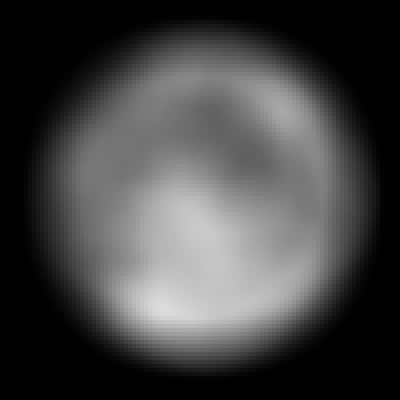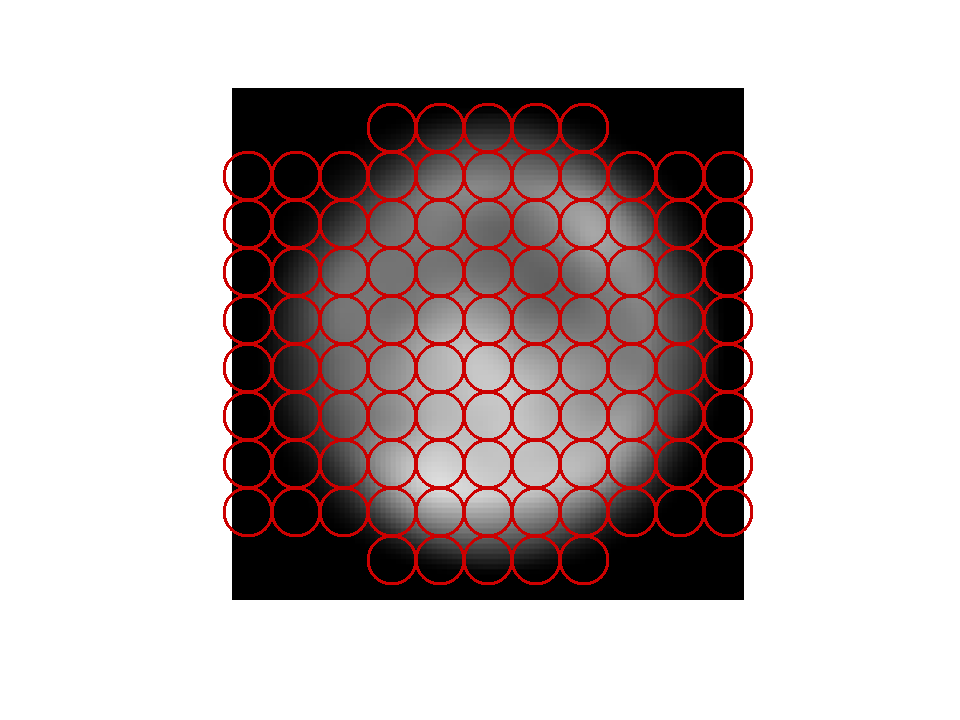

| The angular resolution of an image produced by a telescope depends on the telescopes diffraction limit or, in the case of ground-based optical images, the atmospheric seeing due to turbulence in the Earth's atmosphere above the telescope site. The latter is not an issue for the 21 cm radiation we detect with ALFA. Instead, the ability of ALFALFA to resolve cosmic structures is dictated by the telescope's diffraction limit, which depends on the wavelength of radiation and the telescope's size. |

|
| If we were to observe the Moon with an optical telescope which had the same angular resolution as Arecibo, we would not be able to make out its craters. The image to the far right shows how the Moon would appear if we observed it with the same resolution that Arecibo gives at a wavelength of 21 cm. |

|

|
| Because of the limitations of its angular resolution, we do not use Arecibo to make images of the detailed structures of individual galaxies. Instead, we use it to map large areas of the sky by combining the measurements made at single pointings. Each beam be thought of to contribute a single pixel to the final image, as illustrated in the image to the right. While ALFALFA images are limited in their ability to reveal small-scale structural detail, they allow us to detect and catalog sources even if they are smaller than the beam. And there are plenty of interesting sources which are so big that ALFALFA sees greater large-scale detail missed entirely by interferometers. |

|